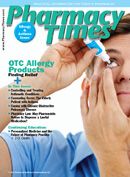Publication
Article
Pharmacy Times
Allergy Cases in Self-Care
Author(s):


Rupal Patel, PharmD
Mary Bridgeman, PharmD
Case One
ML is a 24-year-old woman who presented to her primary care physician 1 year ago with symptoms of runny nose and itchy eyes. She was diagnosed with seasonal allergies and was started on loratadine 10 mg by mouth daily. ML now presents to the pharmacy 1 year later complaining of a cough. After questioning, she claims she does not have a fever, itchy eyes, or a runny nose. However, she complains of a tickle in her throat. What medication, dose, and frequency of administration would you recommend? Are there any other points you may want to counsel her on?
Answer:
The American College of Chest Physicians guidelines on the diagnosis and management of cough recommend that first-generation antihistamines be used to treat acute cough related to postnasal drip or the common cold. First-generation antihistamines, such as brompheniramine, chlorpheniramine, or diphenhydramine, or antihistamine/ decongestant combinations, such as brompheniramine/sustained-release pseudoephedrine, are superior to cough suppressants and expectorants at alleviating cough associated with postnasal drip.
The newer, nonsedating antihistamines have not been shown to have the same effect on alleviating cough symptoms and should not be used for this indication. Based on the patient’s description of a “tickle in her throat,” you can assume her cough is related to postnasal drip. You could recommend diphenhydramine HCl 25 mg by mouth every 4 hours as needed for cough relief. You would want to counsel the patient that she may feel drowsy while taking this medication, and remind her that she may experience other anticholinergic effects, including dry mouth. You should also recommend to ML that she stop taking loratadine while on diphenhydramine.
Case Two
PB is a 65-year-old recently retired man who approaches the pharmacy seeking assistance with product selection. He reports he has recently taken up gardening as a hobby, but suffers from “bad allergies” that seem to occur in the spring. He is wondering if you can recommend something to alleviate his most bothersome symptoms, which include sneezing and having an itchy, runny nose with watery discharge. He has no known drug allergies and takes no other medications at this time. What medication would be appropriate to recommend for selftreatment of PB’s symptoms? What other strategies can you recommend as adjunct therapy?
Answer:
PB is likely suffering from mild intermittent allergic rhinitis (IAR). Symptoms consistent with IAR include sneezing, rhinorrhea or watery nasal discharge, and pruritus of the eyes, nose, or palate. In the case of PB, these symptoms can be classified as mild, as the patient does not report impairment of sleep or disruption of daily activities, and intermittent, in that they seem to occur 4 or fewer days per week and with a seasonal nature, for fewer than 4 weeks.
Common triggers of IAR symptoms include both outdoor (ie, pollen, mold, pollutants) and indoor (ie, cats, dust mites, mold, tobacco smoke) allergens. PB’s symptoms are likely related to being outdoors; it is prudent to recommend he confirm local pollen counts before proceeding outdoors and avoid gardening when pollen counts are the highest, in the early morning and evening hours. To alleviate his symptoms, an oral antihistamine would be the preferred medication for self-treatment. In this case, a nonsedating antihistamine, such as loratadine or cetirizine, could be recommended as initial therapy, as these agents are less likely to cause side effects compared with first-generation antihistamines. You could recommend loratadine 10 mg daily while symptoms persist. â–
Dr. Patel is a clinical pharmacist in North Brunswick, New Jersey, and clinical assistant professor at Ernest Mario School of Pharmacy, Rutgers University. Dr. Bridgeman is an internal medicine clinical pharmacist in Trenton, New Jersey, and clinical assistant professor, Ernest Mario School of Pharmacy.







